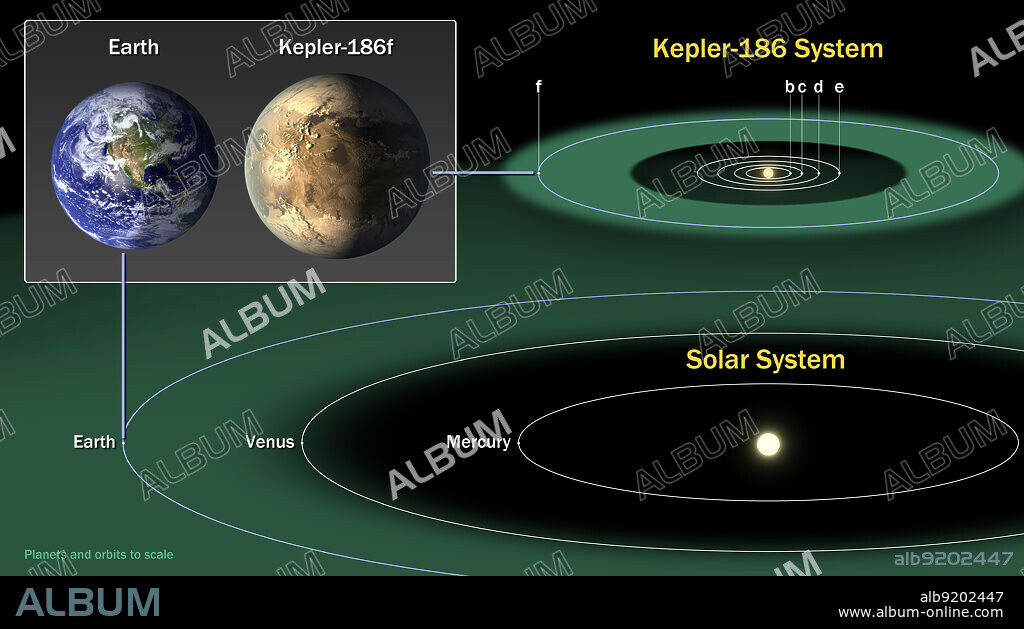alb9202447
Exoplanet Kepler-186 and the Solar System

|
Ajouter à une autre Lightbox |
|
Ajouter à une autre Lightbox |



Avez-vous déjà un compte? S'identifier
Vous n'avez pas de compte ? S'inscrire
Acheter cette image.
Sélectionnez l'usage:

Titre:
Exoplanet Kepler-186 and the Solar System
Légende:
Voir la traduction automatique
Diagram comparing the planets of our inner solar system to Kepler-186, a five-planet star system about 500 light-years from Earth in the constellation Cygnus. The five planets of Kepler-186 orbit an M dwarf, a star that is half the size and mass of the sun. The Kepler-186 system is home to Kepler-186f, the first validated Earth-size planet orbiting a distant star in what astronmers call the "habitable zone", a range of distance from a star where liquid water might pool on the planet's surface. The discovery of Kepler-186f confirms that Earth-size planets exist in the habitable zones of other stars and signals a significant step toward finding a world similar to Earth. The size of Kepler-186f is known to be less ten percent larger than Earth, but its mass and composition are not known. Kepler-186f orbits its star once every 130 days, receiving one-third the heat energy that Earth does from the sun. This places the planet near the outer edge of the habitable zone.
Crédit:
Album / NASA/Ames/SETI Institute/JPL-Caltech / Science Source
Autorisations:
Taille de l'image:
Pas disponible
Taille d'impression:
Pas disponible
Mots clés:
21E SIECLE • ANNEES 2010 • ASTRONOMIE • ASTRONOMIE: PLANETES • COSMOS • GRAPHIQUE • ILLUSTRATION • MISSION • MONSTRE NAIN • NAIN • OBSERVATOIRE • PLANETARIUM • PLANETE • PLANÈTES • SCIENCE: ASTRONOMIE • SOLAIRE • XXIE SIECLE
 Pinterest
Pinterest Twitter
Twitter Facebook
Facebook Copier le lien
Copier le lien Email
Email
